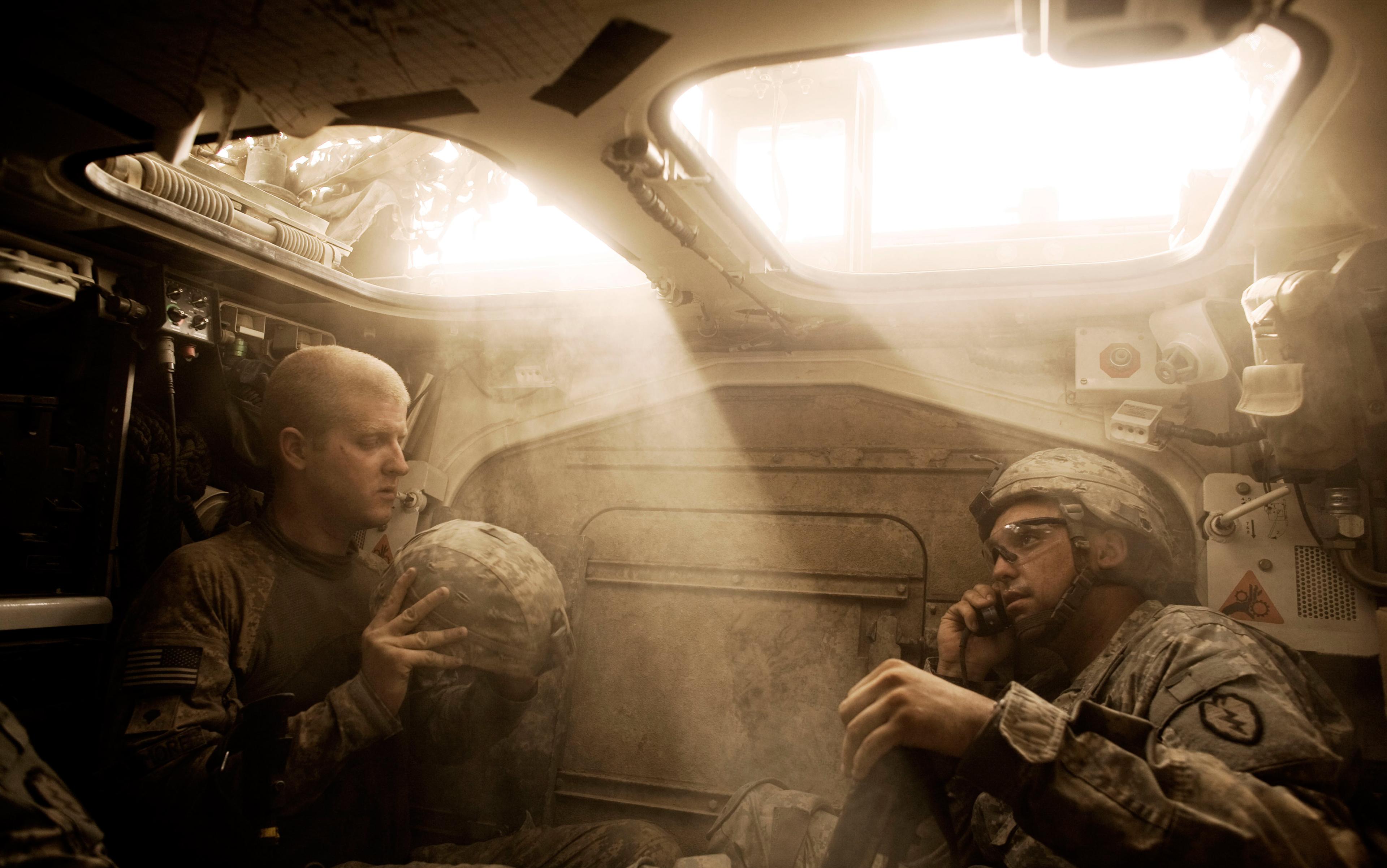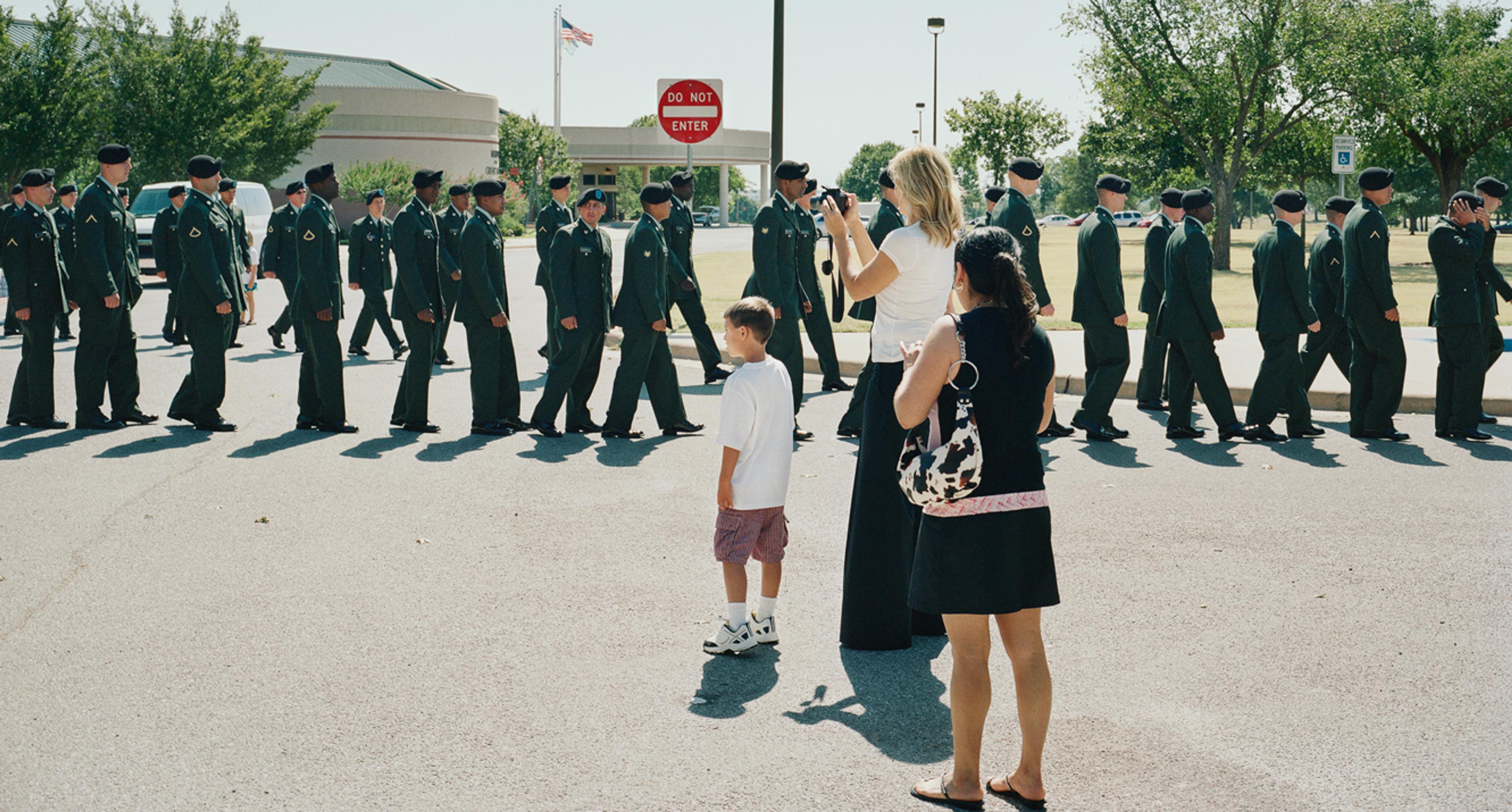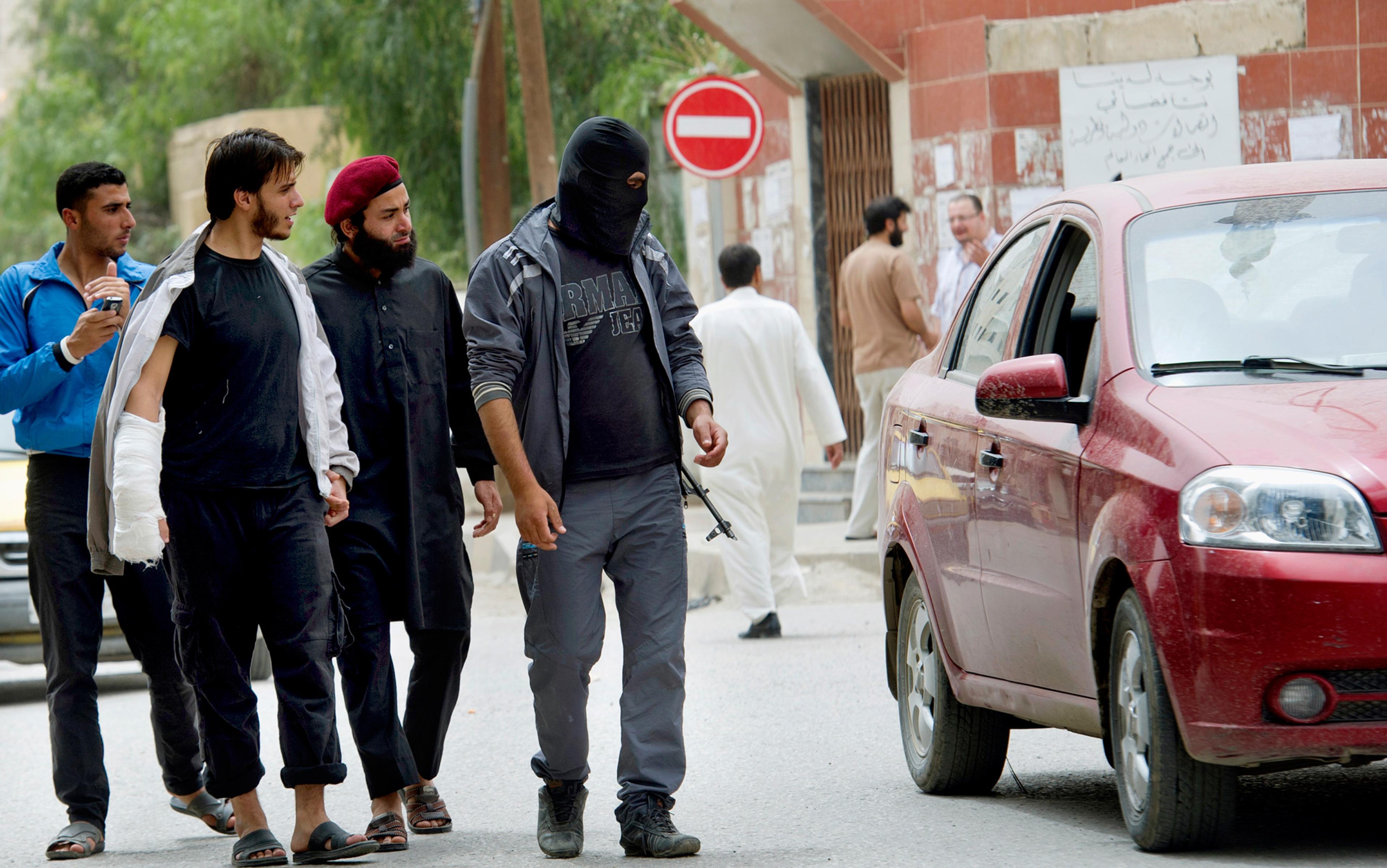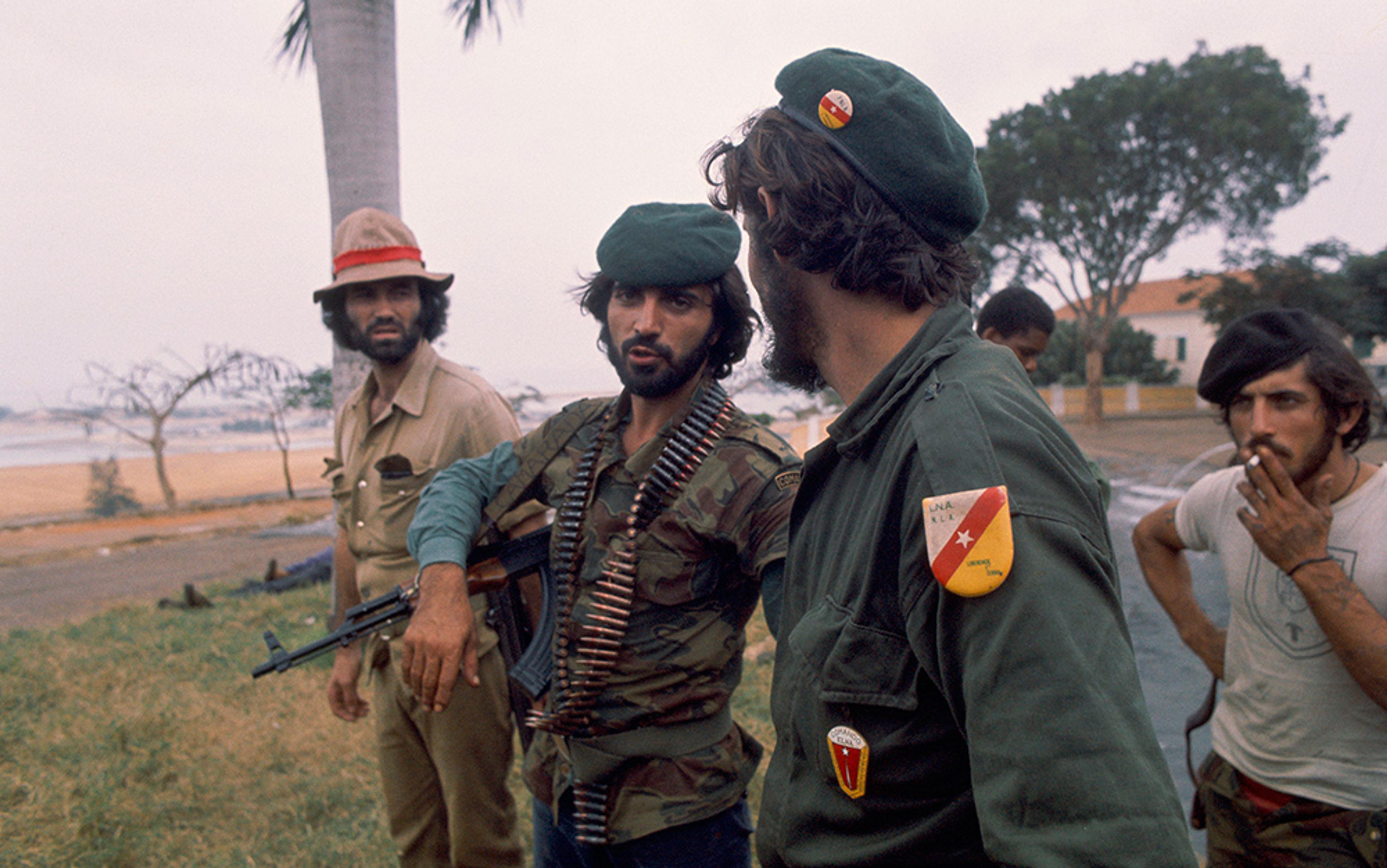On 28 December 2014, the US commander of international forces in Afghanistan presided over a secret ceremony in Kabul. Standing before a group of NATO soldiers, General John Campbell hailed what he described as great gains in a war effort by then underway for 13 years. ‘You’ve made Afghanistan stronger and our countries safer,’ Campbell said. ‘The road before us remains challenging, but we will triumph.’
NATO officials would not reveal the time and place of the gathering, which was meant to mark the end of a gradual handover of combat operations to Afghan security forces. They knew the Taliban would certainly attack if they learned of the event. Just the day before, a rocket fired by the Taliban landed inside the main base of the US-led force near Kabul. The blast caused no casualties but offered a jarring reminder that the Taliban remained a menace. ‘The US and NATO mission was an absolute failure as today’s ceremony shows,’ said the Taliban spokesman Zabihullah Mujahid. ‘They are fleeing from Afghanistan. They have not reached their goals in defeating the Afghan mujahideen, but they are keeping some forces here to reach their vicious aims.’
Like it or not, the comments of a Taliban propagandist came closer to the truth than the optimistic claims of the departing US commander.
As many as 10,000 US troops are due to remain in Afghanistan with a mission to support the Afghan security forces. At its peak in 2011, the International Security Assistance Force (ISAF) numbered 130,000 troops, the majority of them American. More than 50 nations joined the cause, but US ownership of the campaign in Afghanistan has gone unquestioned as a political reality since the days immediately after 11 September 2001 (9/11). This was an American war, one of its longest, in fact.
In the early days, the US appeared triumphant in Afghanistan, sweeping away the Taliban in an invasion fuelled by righteous anger in a matter of months after 9/11. Yet conclusive victory remained elusive. The Taliban endured despite being overthrown and, gradually, regained much of their strength even as the US pressed a determined counterinsurgency campaign against them. By the end of 2014, Taliban fighters seemed to be lurking all around the country, killing thousands of Afghan government soldiers, police officers and civilians. Few observers doubt that the Taliban’s strength will grow in the period ahead. For this, the US has spent more than $1 trillion and lost roughly 2,200 US troops.
As the summer of 2015 nears, it seems only a matter of time before US forces are once again battling the Taliban, either on the ground in Afghanistan or from the skies with bombers and drones, or both. Ongoing events in Iraq seem to hint at what the future will hold for Afghanistan. There is no victory on the horizon for the US after all the years spent warring in Afghanistan. Not even a real end was in sight as the secret handover ceremony came to a close.
How could the Taliban have bested the United States? A more uneven military contest is scarcely imaginable when you consider the state of the two factions on the eve of 9/11. Before the US invasion, the Taliban had an army of roughly 30,000. Taliban forces hardly qualified as a real army, though. They operated more like a decentralised militia scattered around a mountainous country, with few roads and no communications of any kind. They had no officers. A rotating crew of regional commanders oversaw garrisons around the country. Most fighters went unpaid except for the occasional handout from a commander before they went on leave.
In the US, meanwhile, armories bristled with sophisticated weaponry and equipment. The US store of cruise missiles, for example, was 10 times greater than that used in Desert Storm in 1991. Military readiness generally stood at historically high levels. The total number of soldiers, sailors, airmen and marines serving the US passed 1 million. Hundreds of military cargo planes waited at beck and call, prepared to ferry everything from troops and rations to tanks and helicopters into Afghanistan. More than 200 bombers remained primed for action, ready to fly carrying terrifying payloads. A dozen aircraft carriers roamed the oceans. With bases and ships literally all over the planet, the Pentagon ensured US ability to fight anywhere in the world at a moment’s notice.
The Taliban are not to be underrated as military adversaries, clearly. They have proven again and again to be cunning and dogged fighters. Still, the war should have tilted greatly in favour of the US by any reasonable assessment at the outset, given the overwhelming material advantage of the US military. The Americans were, from the start, in control of the skies of Afghanistan, a dominance that had never been achieved over North Vietnam. True, a similar Afghani force had driven out the Soviet Union, but the Soviet Union was already well into a steep decline when, in 1979, Russian forces poured into Afghanistan and began a doomed occupation. The general state of Soviet military reflected this decline.
The biggest mistake was the presumption among US political and military leaders that victory was ever possible
By contrast, the US forces that entered Afghanistan in 2001 stood at historically high levels of power and readiness. Back then, few were betting on the Taliban to win. The more pessimistic prognosticators, myself included, foresaw a long and difficult war for the US in Afghanistan, but not failure.
Even the 2011 killing of Osama bin Laden, a major US war aim, has not overcome the sense of defeat that hangs over US military efforts in Afghanistan now. Last year, the US Army General Daniel Bolger published an account of his time as a commander in both Iraq and Afghanistan, titled Why We Lost. Bolger, and other observers, explain the loss chiefly as a result of consistently poor strategic choices by senior military and civilian officials. Indeed, US leadership has made many bad decisions in Afghanistan and Iraq – the 2001 failure to capture Bin Laden at Tora Bora, the 2003 decision to disband the Iraqi national army, and the willful blindness to the rise of the Iraqi insurgency early in the occupation stand out as particularly consequential. The biggest mistake, however, might have been the presumption, widely shared among US political and military leaders, that military victory was ever possible.
Massive blunders aside, it is also true that the US waged military campaigns in Afghanistan and Iraq about as well any modern nation could. The Pentagon had never seriously contemplated fighting a war in Afghanistan until 9/11 and yet, within weeks, US forces and their Afghan allies were overrunning the country. In 2003, Iraqi forces began crumbling within days of the onset of shock and awe, and Iraqi defence against the subsequent US ground invasion amounted to little more than a tactical retreat. But these momentary triumphs masked a deeper reality about modern conflict that troubled US pursuits from the beginning. Military victory in Iraq or Afghanistan was never, in fact, a real possibility. The very nature of war has changed so much in recent decades that military victory as we tend to imagine it, with winners and losers emerging after a fight with an unambiguous end, is utterly obsolete.
The Second World War shaped much of the way Americans still think about their country and about war: victory entailed utter destruction of the enemy and a new world afterward. Nazi Germany and imperial Japan did not just suffer battlefield defeats. They seemed to vanish, replaced by new nations that Americans helped rebuild and recreate. The US would not salt the earth where it fought, but would instead seed it after victory, looking on paternalistically as new societies, and future allies, arose. The US victory in the Second World War was not just a feat of arms, but a historic triumph of righteousness. There is truth to this view, even if American memory of the war often neglects that the Soviet Union and its Red Army deserve most of the credit for Nazi Germany’s military defeat.
The Korean War, the first major war undertaken by the US after the Second World War, challenged popular American notions of victory but did not erase them. When three years of calamitous fighting ended in stalemate in 1953, the cold warriors of the US felt confused and frustrated. How could US forces win against Japan and Germany less than a decade earlier yet fail against North Korea? Their answer left their sense of US military invincibility largely intact: we were robbed, they told themselves, cheated of victory even as it was within reach. The war was not a fair fight, the thinking went, because outside powers, China and the Soviet Union, became involved.
American supporters of the Vietnam War felt much the same way in 1975, when Saigon fell. This time, even after years of military effort, the US could not even claim a tie. North Vietnam had inflicted a scarring defeat on the US, one felt in almost every corner of society. Still, champions of the US empire resisted a sober interpretation of reality. Anguishing for years afterward, they blamed the loss in Vietnam on everyone ranging from Pentagon war planners to peace protesters.
In truth, both Korea and Vietnam provided early examples of the difficulty military powers face in waging modern war. Both were, in essence, internal conflicts, and internal conflicts have become the new norm in modern war. Traditional wars in which nation states clash militarily have almost disappeared. Years go by without a single one, a remarkable development when considering the history of even just the 20th century.
Meanwhile, wars within states have flourished. Beginning in the early 1960s, the number of internal conflicts around the world began to rise. In 1961, there were about 20 globally. By 1980, around 40 had taken shape. After 1989, the end of the Cold War, the trend continued accelerating. When the Berlin Wall fell, 40 to 45 internal conflicts brewed in various corners of the world. By 1991 there were more than 50. The numbers have inched downward since then but remain significant, much higher than in the decades immediately after the Second World War. At present, more than two dozen internal conflicts are active somewhere in the world during any given year. For the most part, this strife unfolds year to year in the same places. Long-simmering conflicts in the Democratic Republic of Congo (DRC), Colombia and other countries occasionally flash into the headlines, but generally these wars continue without much public attention from the US. But, nonetheless, these and other conflict zones reveal what war has come to mean for the US in the 21st century.
the odds of the US coming up a winner in a modern war are perhaps as low as one in seven
Since the early 1980s, conflicts have generally become more fragmented, meaning they involve more than two warring parties. The spread of internal conflicts has led outside nations to become more involved, which tends to prolong hostilities. In the 1990s, few internal conflicts drew outside powers. By 2010, almost 27 per cent of internal wars entangled outside nations. The causes of these fragmented internal conflicts are complex, varying from region to region. In parts of Africa, especially parts of West Africa in the 1990s, diamonds and other easily looted resources have helped drive conflict. In other parts of Africa, such as the eastern edge of the DRC, disease and environmental degradation have shaped regional fighting. An unrelenting appetite for narcotics in the US has stoked violence in many Latin American countries. Globally, a booming arms trade has helped give rise to Kalashnikov politics, ie politics practised with either an overt or implied threat of armed violence by competing factions. For the world’s aggrieved and malcontent, making war is easier than ever; making politics more violent and dangerous. So when the US goes to war today, it typically becomes a party to internal conflict instead of a combatant against another country.
Military triumphs against other nations – for example Iraq in 2003 – offer only fleeting victories and serve as preludes to the actual war. In these internal, fragmented conflicts, victory is elusive for any party involved. From 1946 to 1989, for instance, there were 141 internal conflicts worldwide. Of those, 82 ended when one party achieved victory. From 1990 to 2005, there were 147 internal conflicts. Of those, only 20 ended with one faction legitimately claiming victory. Put another way, since 1990, less than 14 per cent of internal conflicts produced a clear winner. About 20 per cent produced a ceasefire. And about 50 per cent simply persisted. Statistically, the odds of the US coming up a winner in a modern war are perhaps as low as one in seven.
Superpowers and hegemons are also winning less frequently these days than they once did. From 1900 to 1949, strong militaries fighting conventionally weaker forces won victories about 65 per cent of the time. From 1950 to 1998, advantaged military powers claimed war victories only 45 per cent of the time. In the first part of the 19th century, superior powers won wars almost 90 per cent of the time. For hundreds of years, nations with the will and the means to raise strong militaries have wagered that the extraordinary investment of time, treasure and lives would yield rewards in war when the moment came. For hundreds of years, that was a safe bet – but not any more. For 21st-century superpowers, war is no longer likely to be a winning endeavour.
In the US, 9/11 revitalised the myth of military victory, with President George W Bush leading the call. ‘We will accept no outcome but victory,’ he declared in 2003. In 2005, Bush promised victory in the war on terror in general and in Iraq specifically. In 2006, amid chaos in Iraq, Bush repeated: ‘We will settle for nothing less than complete victory.’ No significant debate arose about what victory might mean. Most presumed that Al-Qaeda, the Taliban and Saddam Hussein would be defeated and be gone. The US would also transform the societies in which the perpetrators had risen, just as the US had altered the course of history in Japan and Germany for all time.
The war years that followed proved remarkable. The most powerful country in the world waged war in Afghanistan and Iraq with few restraints. For five years, public will to fight in both Afghanistan and Iraq held steady. In the 1990s, Pentagon spending rose to record sums despite the disappearance of the Soviet Union. In 2012, when the boom in US defence spending had reached a high point, the Pentagon budget totalled more than $700 billion. In 2015, the US will spend more on its military than China, Russia, Saudi Arabia, France, the United Kingdom, India, and Germany combined.
On 10 September 2014, as the US prepared to mark another 9/11 anniversary, President Barack Obama addressed the nation from the White House. He vowed to destroy the Islamic State, a Sunni militant group made up mostly of guerrilla veterans from the days of the US occupation of Iraq. By the time Obama spoke, the US military had already launched more than 100 airstrikes against the Islamic State, in a failed effort to keep the group from seizing territory in northern Iraq and Syria. Obama easily found bipartisan support for a new war effort. More airstrikes soon followed, and hundreds of US troops began heading back into Iraq, despite Obama’s pledge to be done with military intervention in the country in 2011.
By the end of October 2014, the US military was spending more than $8.3 million per day in operations against the Islamic State. White House officials have asked Congress for $5 billion to fund further operations in the near term. The White House plans to deploy at least 3,000 US troops to Iraq in 2015. These wars, like most modern wars, will produce no victors. They will simply persist.
Popular faith in the ability of the US to achieve military victory seems to have faded somewhat in recent years. A 2014 poll by the Pew Research Center found that 52 per cent of Americans felt that the US had failed to achieve its war aims in either Afghanistan or Iraq. Meanwhile, critiques of US militarism abound. Opponents of US interventions range from the Kentucky Republican Senator and presidential hopeful Rand Paul to leftist Noam Chomsky.
Yet these voices have not altered the perceptions of US political and military leaders, who continue to believe in the prospect of US military victory. Paul himself embraced the idea when attacking Obama’s approach to interventionism in a speech given on the Senate floor. Criticising the Obama administration’s decision to renew US military presence in Iraq, Paul declared: ‘I will not vote to send our nation’s best and brightest to fight for anything less than victory.’ In Washington DC, even the rare critic of US military actions invokes the myth of victory.






